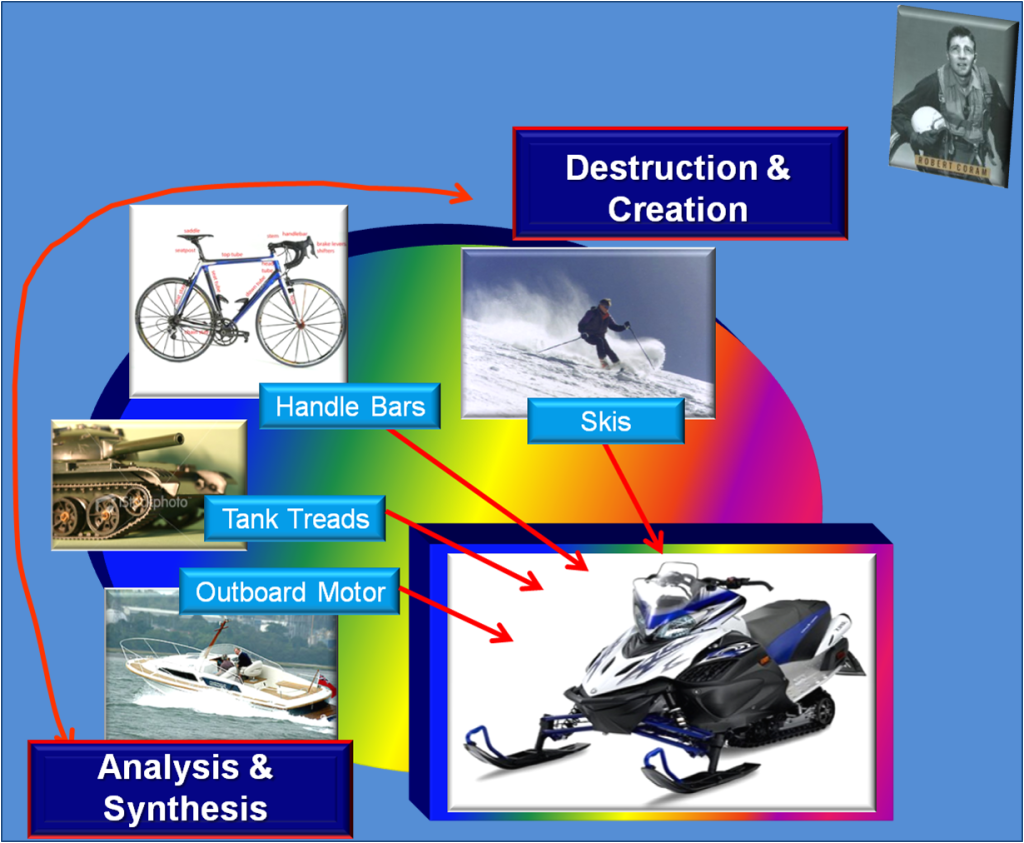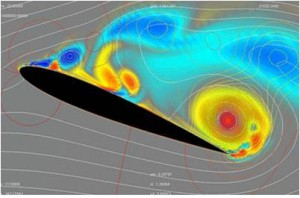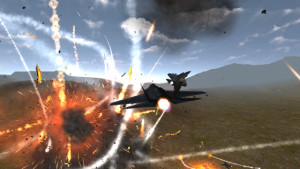Blown Slick Series #7 (Part 1)
To discern what is going on we must interact in a variety of ways with our environment. In other words We must be able to examine the world from a number of perspectives so that we can generate mental images or impressions that correspond to that world. More to the point We will use this scheme of pulling things apart (analysis) and putting them back together (synthesis) in new combinations to find how apparently unrelated ideas and actions can be related to one another. John Boyd

Proposed theories and historical use of airpower are discussed in detail in many excellent books, PhD theses, and blogs covering air warfare, its organizations, people, technology, and operations. In the previous post in this series selected key references were provided that are currently in use for Blown Slick – Light Attack Fast Pursuit Airpower Analysis.
This series, as noted in previous offerings, intends to provide and discuss elements that appear to have significance for understanding and future application of airpower in a mosaic style . The metric of the series success will depend on not only the what and the how of the analysis, but also most importantly on how critical aspects are pieced back together to offer a future view for consideration and critique.
Given that the mosaic approach will most certainly jump around, here in this piece, I am providing short descriptions of the mental and organizational tools I’m using -sometimes in combination – for not only gaining perspective on future airpower, but also for how I offer the information to Remembered Sky readers for their own consideration. The following (in two parts) is both a guide and a reference, certainly for me to stay focused and hopefully for readers to comprehend why certain elements are discussed in a particular manner.
INTRODUCTION: Colonel John Boyd’s “snowmobile building” concept.
Col John Boyd is known to many in aviation as the developer of the Energy Maneuverability aeronautical concept for comparing fighter aircraft performance as a function of energy available in a specified portion of the flight envelop. This construct is still currently used in a/c design and was first applied for the F-15 and F-16. Indeed, he is considered by many the father of the F-16. For others he is most recognized for his post retirement investigations of warfare, working his way backward through the history of wars and warfare to find not so much what has changed, but rather to ascertain what remains the same.
many the father of the F-16. For others he is most recognized for his post retirement investigations of warfare, working his way backward through the history of wars and warfare to find not so much what has changed, but rather to ascertain what remains the same.
The results were the Patterns of Conflict briefings, the notion of the OODA Loop (Observe Orient, Decide, Act) decision process, and also, not as well known, the critical discussion of the inadequacy of analysis in regard to organizations and demand for adaptability in their operations if they are to be of any real end value unless synthesis was a natural follow-on embedded process. I.e., taking crucial pieces out of analysis and re-combining to adapt to a dynamic complex problem, thus creating snowmobiles.
The depiction could then be considered a destruction-creation process (see the opening graphic) or in short, how and why it is crucial for adaptability in the face of conflict to “build snowmobiles.” We’ll return to this in closing, but for now, the question is whether our current threat environment – from ISIS to the anti-access area denial type (A2AD) problems – along with a rapidly growing international military technical capability require new thinking and adjustment to how we approach airpower, or as some have offered – a re-norming of airpower?
In two parts, the following describe first, the elements for consideration – boundary conditions and operational threads, and then in part 2, possible methods of viewing those elements in multiple arrangements and how we might put analysis back together in a different perspective.
1. Boundary layer / Boundary conditions for Airpower analysis by Boris
You can’t fix things or suggest a perspective for legitimate reflection without some real understanding of the problem and its overall context, nor can you expect change without actionable understanding. That’s where establishing boundary conditions as a vehicle to frame the problem – and therefore garner insight – become important.
Boundary conditions – the set of conditions specified for the behavior of the solution to a set of differential equations at the boundary of its domain – are important in determining the mathematical solutions to many physical problems.
More specifically, concerning flight, the condition is noted as the boundary layer – the layer of reduced velocity in fluids, such as air and water, that is immediately adjacent to the surface of a solid – the wing – past which the fluid is flowing.
If the angle of incidence of an airfoil in relation to airflow is increased, whether initiated by the pilot or by impact of turbulent air, the boundary layer flow can slow to the point of turbulence (loss of laminar flow) and in this disruption, the flowing air can no longer stay attached to the layer/airfoil, drag over comes lift and the wing is no longer in stable positive flight – not flying it stalls.
We bound the problem so as to better understand our situation within our environment. Without that understanding for our analysis/analogy we run high risk of creating boundary layer separation, then stall, spin, crash, burn, and die when encountering the hyper complex or the unconventional
There are any number of essential elements of understanding that could be considered appropriate as boundary conditions for discussion of airpower in the 21st century and it is certainly debatable whether an element is a boundary condition or rather an operation thread running through airpower as a whole. For Blown Slick purposes, to various degrees within the mosaic construct, here are the current boundary conditions:
- the impact of the history of air warfare and aircraft design
- the various theories of airpower
- the service, operational, and design features of both fighter and attack aircraft
- the potential of multi-role fifth generation joint strike fighter variants
- the ongoing threat environment
The offerings to date fit within this context but in no way should be considered as all encompassing. Also, while not a boundary condition for airpower, but I think important for consideration, the thinking and analysis provided from other sources will be periodically provided for consideration and a handy repository for future review. By way of example is Destined for Glory featured in Series #5 The 4th of June – Remembered Sky Day.
2. Operational Threads
Operational Threads are critical themes for designing effort. They may include technology, doctrine, tactics, techniques, and procedures. They are intended to focus effort and help define essential elements of understanding necessary to address the issue correctly. In addition, they assist in determination of problem definition, determination of objectives and criteria for measuring results. Given Blown Slick’s mosaic approach, some of the operational threads will overlap with the boundary conditions but provide separate means of addressing the issues- hopefully instructive. For this investigation the threads are:
- Roles and missions
- Aircraft types, design and performance and comparisons
- Air warfare beliefs developed over time
- Individual service approaches to aircraft design and operational approaches
- Specific threats and impact on operations
In addition, the following deserve consideration as essential elements of understanding and should be considered critical threads in themselves:
- Power Projection, and Strike Warfare as they are central aspects of airpower theory and operations. Note that since the F-35 is intended to replace multiple tactical aircraft, the basic roles and missions that the multi-role Joint Strike Fighter must be able to execute must be well understood
- Irregular warfare, inclusive of Close Air Support (CAS), is a current and persistent operational problem of (as example the Syrian situation along with ISIS operations)
- Anti-access/Area denial (A2/AD) peer power threat capability along with development of Joint Operational Access in response (as example China but with note that Iran and North Korea pose similar problems).
- Fifth Generation fighter sensor and command control capability and in particular the aspect of the F-35 capabilities to fuse on-board sensor information from multiple systems and generate an AWACs type C4ISR -D (decision) integrated battlespace situational awareness across platforms. If there is a “re-norming” this will be its basis. Current defense oriented writing focuses mostly on how 5th generation planes perform in regard to #1 above.
What I am hoping will be instructive and different from other pieces of work is the insight gained from 1) the intersection of key ideas from the multiple sources and lines of thought and 2) the perspective of viewing the impact on related elements of airpower as other key elements are inserted and placed in context in a group of three or a triangle like space – a term I borrow from a navigation context to consider loosely triangulation.
Continued in Part 2 – the Blown Slick discussion of what might be characterized as lens through which to view the elements of airpower: 3) Intersections; 4) Triangles; and then 5) putting it all together via construction of a “snowmobile.”






